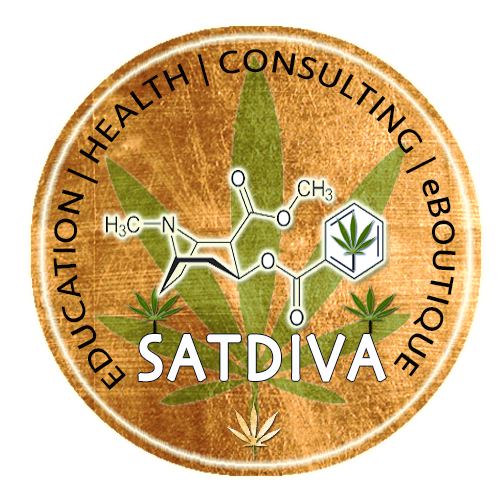Use and effectiveness
Thousands of clinical studies and science journal articles have demonstrated that marijuana, also known as cannabis, can effectively treat, prevent, or in some cases cure, many debilitating illnesses and symptoms. For instance, NIH (The National Institutes of Health, a Federal agency) states “recent animal studies have shown that marijuana extracts may help kill certain cancer cells and reduce the size of others. Evidence from one cell culture study suggests that purified extracts from whole-plant marijuana can slow the growth of cancer cells from one of the most serious types of brain tumors. Research in mice showed that treatment with purified extracts of THC and CBD, when used with radiation, increased the cancer-killing effects of the radiation.
A brief history of medical marijuana
Marijuana has long been used as a medicine. Its earliest known historical reference dates to China, nearly 5,000 years ago. Its medicinal uses were subsequently described in the Egyptian Ebers Papyrus 3,500 years ago, as well as in ancient texts from India, Greece, Rome and the medieval Islamic world.
Cannabis was part of the U.S. pharmacopeia through much of the 19th and early 20th centuries. Its use was curtailed by the Marijuana Tax Act of 1937, which was later ruled unconstitutional by the Supreme Court in 1969. The Controlled Substances Act, which established Schedules for ranking substances according to their
dangerousness and potential for addiction, was passed in 1970. Cannabis was placed in the most restrictive category, Schedule I.
In 1996, California became the first state to approve the use of marijuana for medical purposes, and many other states have followed in the ensuing years.
The science of cannabinoids
There are more than 400 natural compounds in medical marijuana that are shown to have analgesic, anxiolytic, anti-psychotic, anti-inflammatory, antioxidant, antispasmodic, antiemetic, anti-fungal, anti-mutagenic, antibiotic, sedative, euphoriant, immune potentiator, antipyretic, cytoprotective and AChE inhibitive properties.
 Of these, eighty are only found in cannabis plants. These eighty special compounds are known as cannabinoids. Cannabinoids relieve symptoms of illness by attaching to receptors in the brain that look for similar compounds that occur in the human body, such as dopamine.
Of these, eighty are only found in cannabis plants. These eighty special compounds are known as cannabinoids. Cannabinoids relieve symptoms of illness by attaching to receptors in the brain that look for similar compounds that occur in the human body, such as dopamine.
There are five major cannabinoids in medical marijuana that are believed to be particularly effective for relieving symptoms of illness, and each one produces different physical and psychological effects. This is why certain strains of medical marijuana are bred to have different amounts of each cannabinoid and are recommended for different conditions.
CBD and its effects
CBD stands for cannabidiol. Cannabidiol actually reduces the psychological effects of medical marijuana. For most patients, a strain that has high CBD will have fewer “mental” effects and more physical ones than they would have with a high-THC strain. High cannabidiol medical marijuana strains are often used with illnesses that have strong physical symptoms.
Cannabidiol’s effects include:
- reduced pain
- reduced anxiety
- reduced nausea
- sedative effects
- anti-convulsive
- anti-schizophrenic
THC and its effects
THC stands for delta-9-tetrahydrocannibinol. It is probably the best-known cannabinoid present in medical marijuana. Physically it acts as a muscle relaxant and anti-inflammatory and psychologically it acts as a stimulant. This may make medical marijuana strains high in THC a good choice for patients who need relief but also need to remain alert and active.
THC in medical marijuana acts in the following ways:
 anti-epileptic
anti-epileptic- anti-in
flammatory - anti-depressant
- stimulates appetite
- lowers blood pressure
Other major cannabinoids:
CBN and its effects
CBN is cannabinol, not to be confused with Cannabidiol. Cannabinol is very similar to THC, but has less psychological effects. It is produced as THC breaks down within the medical marijuana plant. High THC will make cannabinol’s effects stronger, and very high cannabinol concentrations can produce undesirably strong “head highs.” High cannabinol levels have been found to be helpful for:
- lowering pressure in the eye (such as with glaucoma)
- analgesic
- anti-seizure
CBC and its effects
CBC stands for cannabichromene. Cannabichromene’s main action is to enhance the effects of THC. High cannabichromene levels will make a high-THC medical marijuana strain much more potent. Cannabichromene, working together with THC, is known to be a:
- sedative
- analgesic
- anti-inflammatory
CBG and its effects
CBG is an abbreviation for cannabigerol. Cannabigerol has no psychological effects on its own, and is not usually found in high amounts in most medical marijuana. Scientists believe that cannabigerol is actually one of the oldest forms of cannabinoids, meaning it is essentially a “parent” to the other cannabinoids found in medical marijuana. It also has anti-microbial properties. Cannabigerol has physical effects such as:
- lowering pressure in the eye
- anti-inflammatory
- sedative
- sleep assistance
Combining strains
Alone, none of the five major cannabinoids are as effective as when they work together. These five cannabinoids also work with the minor compounds in marijuana, and this is probably one reason that medical marijuana replacements like Marinol have not been found to work very well.
Professional medical marijuana growers can analyze their medical marijuana strains to breed and grow medication for patients with the desired range of levels of each major cannabinoid. Using their knowledge of what each compound does helps medical marijuana pharmacists find the right combination for patients, in order to treat specific conditions and find maximum benefits and relief.
Adapted from How Medical Marijuana Works at UnitedPatientsGroup.com

